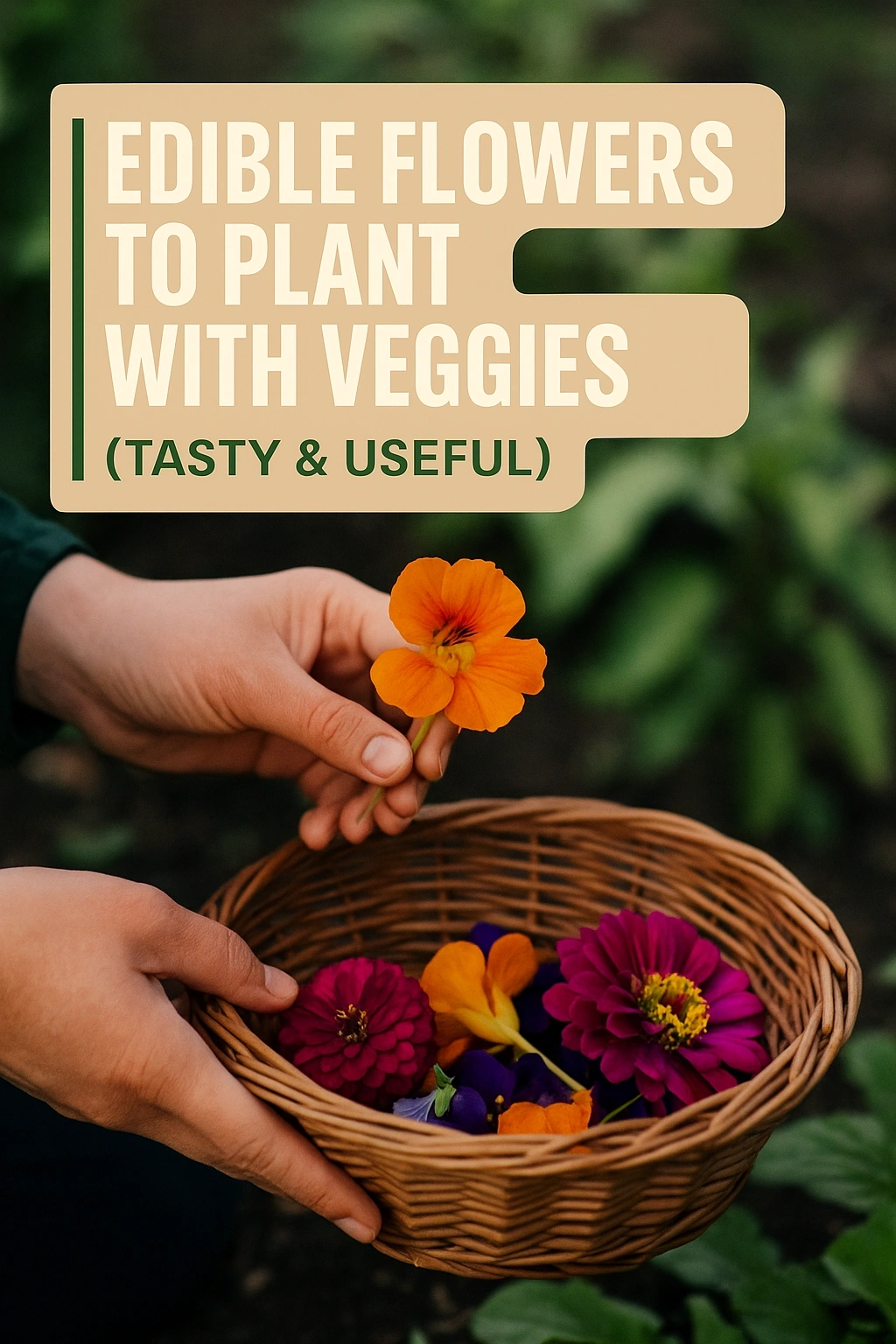
Integrating edible flowers into your vegetable garden not only enhances its aesthetic appeal but also adds unique flavors and nutritional benefits. These vibrant blooms can provide culinary inspiration and attract beneficial pollinators to your garden. In this article, we will explore a variety of edible flowers that pair well with vegetables, highlighting their uses and benefits. Discover how these delightful additions can elevate your gardening experience and enrich your meals.
The Benefits of Growing Edible Flowers
Edible flowers are not just pretty; they offer a range of benefits for gardeners and cooks alike. They can attract pollinators, which can improve the yield of your vegetables. Many edible flowers have unique flavors that can enhance dishes, from salads to desserts. Furthermore, they can provide additional nutrients and antioxidants, contributing to a healthier diet. Growing edible flowers alongside your vegetables also promotes biodiversity and can help deter pests naturally.
Popular Edible Flowers to Plant with Vegetables
Choosing the right edible flowers to plant alongside your vegetables can enhance both the garden’s beauty and its productivity. Here are some popular edible flowers and their ideal vegetable companions, along with tips on how to grow and use them.
Nasturtiums
Nasturtiums are vibrant, peppery flowers that thrive alongside vegetables like tomatoes, radishes, and cucumbers. These flowers can deter aphids and other pests, making them a beneficial companion plant. Their leaves and flowers are edible, with a flavor reminiscent of arugula.
Calendula (Pot Marigold)
Calendula flowers are bright orange and yellow, providing a cheerful addition to any garden. They pair well with spinach, lettuce, and other leafy greens. Calendula petals can be used to add color to salads, and they also have anti-inflammatory properties, making them a popular choice for herbal remedies.
Chive Blossoms
The lovely purple blossoms of chives are not only visually appealing but also offer a mild onion flavor. Chive flowers grow well with carrots, potatoes, and other root vegetables. They can be used to garnish salads, soups, and dips, adding both flavor and elegance to your dishes.
Bee Balm
Bee balm, or Monarda, is known for its fragrant, tubular flowers that attract pollinators. It grows well in vegetable gardens alongside tomatoes and peppers. The leaves and flowers are edible and can be used to make herbal teas or as a garnish in salads. Bee balm also has antimicrobial properties, adding health benefits to its culinary uses.
How to Grow Edible Flowers
Growing edible flowers requires similar care as growing vegetables. Choose a sunny spot in your garden, as most edible flowers thrive in full sun. Ensure well-drained soil and consider companion planting to maximize benefits. Regular watering and organic fertilization will help your flowers flourish. When harvesting, pick the flowers in the morning when they’re at their freshest for the best flavor.
Companion Planting Tips
When planting edible flowers with vegetables, consider their growth habits and space requirements. Group taller flowers, like sunflowers, away from shorter vegetables that may get overshadowed. Ensure that the flowers you choose won’t compete with your vegetables for nutrients and water. Use flowers that attract beneficial insects near your crops to help manage pests naturally.
Using Edible Flowers in Your Cooking
Edible flowers can elevate your culinary creations, adding both flavor and visual appeal. They can be used in salads, stews, and desserts, or as garnishes for drinks. When using edible flowers, it’s essential to ensure they are pesticide-free and safe for consumption. Experiment with different types of flowers to discover new flavor profiles and enhance your dishes.
Creative Culinary Uses
Incorporate edible flowers into your cooking in various ways. Add nasturtium petals to salads for a peppery kick, or use calendula petals to brighten soups. Freeze edible flowers in ice cubes to create stunning drinks, or use them to decorate cakes and pastries. The possibilities are endless, allowing you to express your creativity in the kitchen.
Frequently Asked Questions (FAQs)
Are all flowers safe to eat?
No, not all flowers are safe for consumption. It is crucial to research and ensure that the flowers you choose are edible and free from harmful pesticides or chemicals.
How do I know if a flower is edible?
To determine if a flower is edible, consult reliable gardening resources or guides. Look for commonly recognized edible flowers like nasturtiums, calendula, and chive blossoms.
Can I grow edible flowers in pots?
Yes, many edible flowers can be grown in pots, making them suitable for small spaces. Ensure that the pots have adequate drainage and receive enough sunlight.
When is the best time to harvest edible flowers?
The best time to harvest edible flowers is in the morning after the dew has dried. This is when they are at their freshest and most flavorful.
How should I store edible flowers after harvesting?
Store harvested edible flowers in a cool, dry place, preferably in a container in the refrigerator. Use them as soon as possible for the best flavor and texture.
